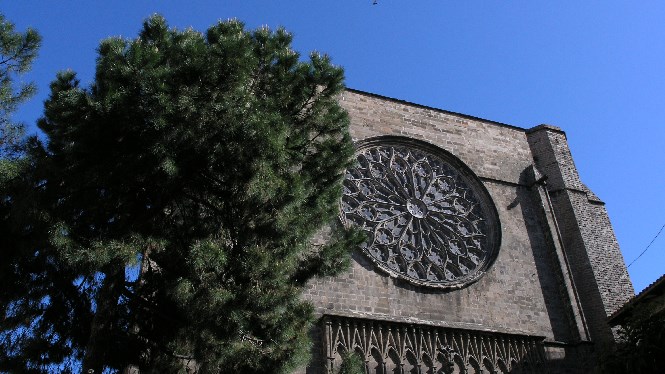Barcelona offers a wide range of interesting options all year round and opens its doors to everyone. Make the most of the sunshine to go for a stroll and take a dip in the sea on one of the city’s accessible beaches. Experience Gaudí’s nature with your hands, add a sign-language tour or an audiodescribed show to your plans… Do you need any more ideas? You’ll find them with the SEARCH FACILITY or on the SUMMARY for accessible places of interest!

Antònia, the biggest of the six bells that crown the octagonal belfry of the church of Santa Maria del Pi can be heard ringing out all around Barcelona's Gothic Quarter. We can now take a closer look at the church of Santa Maria, which nestles between the picturesque squares, the Plaça del Pi and Plaça Sant Josep Oriol.
A church stood on this site as long ago as the 5th century but the current basilica of Santa Maria del Pi was built between 1319 and 1391, in the Catalan Gothic style. It comprises a single nave, with side chapels between buttresses. The cross-vaulted ceiling, which is one of the highest in the country, gives a true sense of monumental scale. Four of the stained-glass windows are original and were created by one of the finest stained-glass artists of the Catalan baroque period, Josep Ravella. The basilica has the biggest rose window in Catalonia. It is an exact copy of the 14th-century original and was made by Antoni Gaudí's right-hand man, Josep Maria Jujol, after its destruction during the Spanish Civil War (1936-1939). Inside the church is a 14th-century Gothic image of the figure of the Virgin of the Pines.
Visit the nave, the adjoining chapels and the museum galleries which house an important collection of silverware and goldware, and exceptional funerary coats of arms which are unique to Catalonia. Climb to the top of the bell tower to enjoy some of the finest views of Barcelona. Or let yourself be transported by the live concerts held inside the church.
It is said that a pine forest once stood on this site of Barcelona's Gothic Quarter, and, indeed, a pine tree still stands in front of the church. At the side of the church, the Ave Maria doorway features some Romanesque elements of the previous church. The church of Santa Maria del Pi houses the remains of many members of Barcelona's nobility and the remains of the most Barcelonian of saints, Sant Josep Oriol, who was a priest at this famous church.
Let yourself be captivated by the charms of the Plaça del Pi and the Plaça Sant Josep Oriol where some 40 painters exhibit their works every weekend.